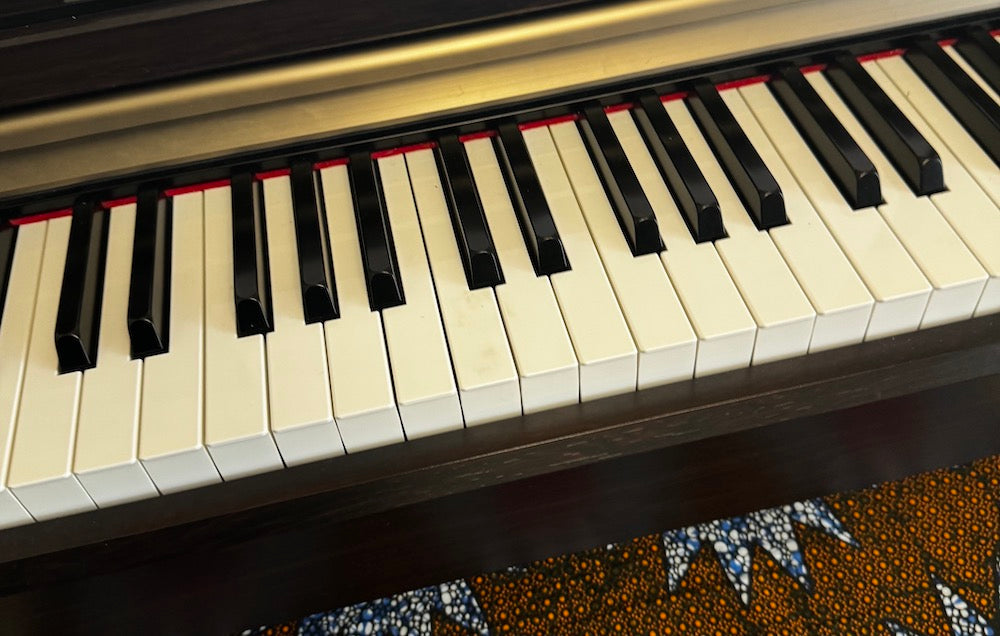
Deep breathing
Inhale slowly and deeply through your nose while expanding the abdomen. Exhale slowly through your mouth.
Conscious relaxation of whole body
Starting at the toes, tense and relax that set of muscles. Move to each body area in turn, the calves, then upper legs, etc.
Roll those shoulders
Roll shoulders in circles, loosening up the arm joint.
Hang loose
Bend forward, let arms hang loose – let gravity take over – feel the weight of the arm.

Puppy dog
Hold up both hands while wrists are bent upwards. Let hands flop down, lift up. Let fall again. Repeat. This also feels like bouncing on a bed.
Floppy doll
While sitting down (away from the piano), lift both arms up, then let them drop weightlessly ending with hands in lap. Make sure that the shoulder/arm joint is loose. You can also do this with the arms stretched out in front of you.
Get ready
Sit at piano. Place both hands in piano posture on keyboard. Relax sand release the arm weight.
Five-finger exercises
While concentrating on keeping a loose wrist and relaxed arm, play the C-5 finger scale.
Weigh that arm
Sit on a chair with armrests. Let arm hang down over the side from the elbow – feel the weight of the arm. Lift up the arm and drop again. Arm should feel heavy. Think consciously about using arm weight to play instead of pushing at the keys with the fingers.
Puppet on a string
Pretend your arms are controlled by a puppeteer – the strings are holding them up! String is cut and arm falls down.
Meditate while playing
Think about how a scale, a chord or a particular passage feels when you play it.
Slowly does it
Don’t rush into practicing or playing. Breathe, think about what’s coming. Practice slowly, speed up when you feel comfortable. Slow down when you start tensing up.
Have a break!
Break up your practice sessions, also your pieces, so that you can focus on maintaining that relaxed posture. Do another activity and then come back.
Painting a picture in your mind
While lying down and relaxing, see how you play your piece in your mind – think how your fingers and arms move.

